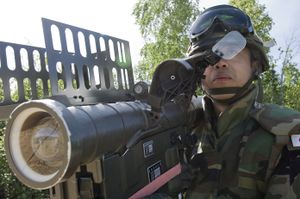صاروخ سطح-جو
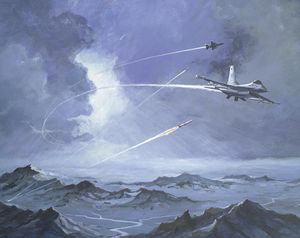
الصاروخ سطح-جو (surface-to-air missile ؛ SAM)، أو صاروخ أرض-جو (ground-to-air missile ؛ GTAM /dʒɪˈtæm/)، هو صاروخ مصمم للإطلاق من الأرض لتدمير طائرة أو صاروخ آخر. وهو أحد أنواع antiaircraft system; in modern armed forces, missiles have replaced most other forms of dedicated antiaircraft weapons, with anti-aircraft guns pushed into specialized roles.
The first serious attempts at SAM development took place during World War II, although no operational systems were introduced. Further development in the 1940s and 1950s led to the first operational systems being introduced by most major forces during the second half of the 1950s. Smaller systems, suitable for close-range work, evolved through the 1960s and 1970s, to modern systems that are man-portable. Shipborne systems followed the evolution of land-based models, starting with long-range weapons and steadily evolving toward smaller designs to provide a layered defence that have pushed gun-based systems into the shortest-range roles.
The American Nike Ajax was the first operational guided missile SAM system, and the Soviet Union's S-75 Dvina was the most-produced SAM. Widely used modern examples include the Patriot and S-300 wide-area systems, SM-6 naval missiles, and short-range man-portable systems like the Stinger and Strela-3.
. . . . . . . . . . . . . . . . . . . . . . . . . . . . . . . . . . . . . . . . . . . . . . . . . . . . . . . . . . . . . . . . . . . . . . . . . . . . . . . . . . . . . . . . . . . . . . . . . . . . . . . . . . . . . . . . . . . . . . . . . . . . . . . . . . . . . . . . . . . . . . . . . . . . . . . . . . . . . . . . . . . . . . . .
معلومات عامة
Surface-to-air missiles are classified by their guidance, mobility, altitude and range.
القدرة على الحركة والمناورة والمدى
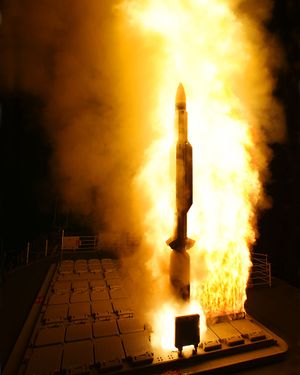
Missiles able to fly longer distances are generally heavier, and therefore less mobile. This leads to three "natural" classes of SAM systems; heavy long-range systems that are fixed or semi-mobile, medium-range vehicle-mounted systems that can fire on the move, and short-range man-portable air-defense systems (MANPADS).
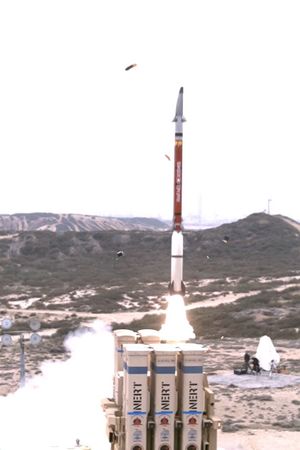
أنظمة التوجيه
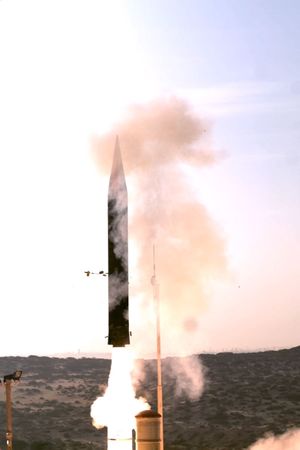
SAM systems generally fall into two broad groups based on their guidance systems, those using radar and those using some other means.
الحصول على الأهداف
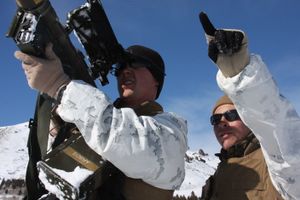
Long-range systems generally use radar systems for target detection, and depending on the generation of system, may "hand off" to a separate tracking radar for attack. Short range systems are more likely to be entirely visual for detection.
انظر أيضاً
- List of surface-to-air missiles
- Anti-aircraft warfare
- Man-portable air-defense systems
- Missile guidance
- List of NATO reporting names for surface-to-air missiles
- List of missiles
- List of anti-aircraft weapons
- Suppression of Enemy Air Defenses (SEAD), the mission of finding and destroying SAM and AA gun installations. The SEAD mission in the United States Air Force is designated "Wild Weasel".
الهامش
- ملاحظات
- الهامش
- ^ "Missile-Killing Interceptors Eyed By Israel, US", Aviation Week's DTI, David A. Fulghum, 23 September 2010
- ^ Eshel, David (2010-02-12). "Israel upgrades its antimissile plans". Aviation Week & Space Technology. Retrieved 2010-02-13.
- ببليوگرافيا
- Davies, Peter. F-105 Wild Weasel vs SA-2 "guideline" SAM, Vietnam 1965–73. Osprey 2011. ISBN 978-1-84908-471-0.
- Hobson, Chris. Vietnam Air Losses, United States Air Force, Navy, and Marine Corps Fixed-Wing Aircraft Losses in Southeast Asia 1961–1973. Midland Publishing 2001. ISBN 1-85780-115-6.
- Michel III, Marshal L. Clashes, Air Combat Over North Vietnam 1965–1972. 1997, Naval Institute Press. ISBN 978-1-59114-519-6
- Westerman, Edward (2001). Flak: German Anti-Aircraft Defenses, 1914–1945. University Press of Kansas. ISBN 0700614206.
{{cite book}}: Invalid|ref=harv(help) - http://artofwar.ru/k/kolesnik_n_n/text_0160.shtml
- http://usva.org.ua/mambo3/index.php?option=com_content&task=view&id=330<emid=60
وصلات خارجية
 Media related to صاروخ سطح-جو at Wikimedia Commons
Media related to صاروخ سطح-جو at Wikimedia Commons- Rest-of-World Missile Systems from the Federation of American Scientists website

